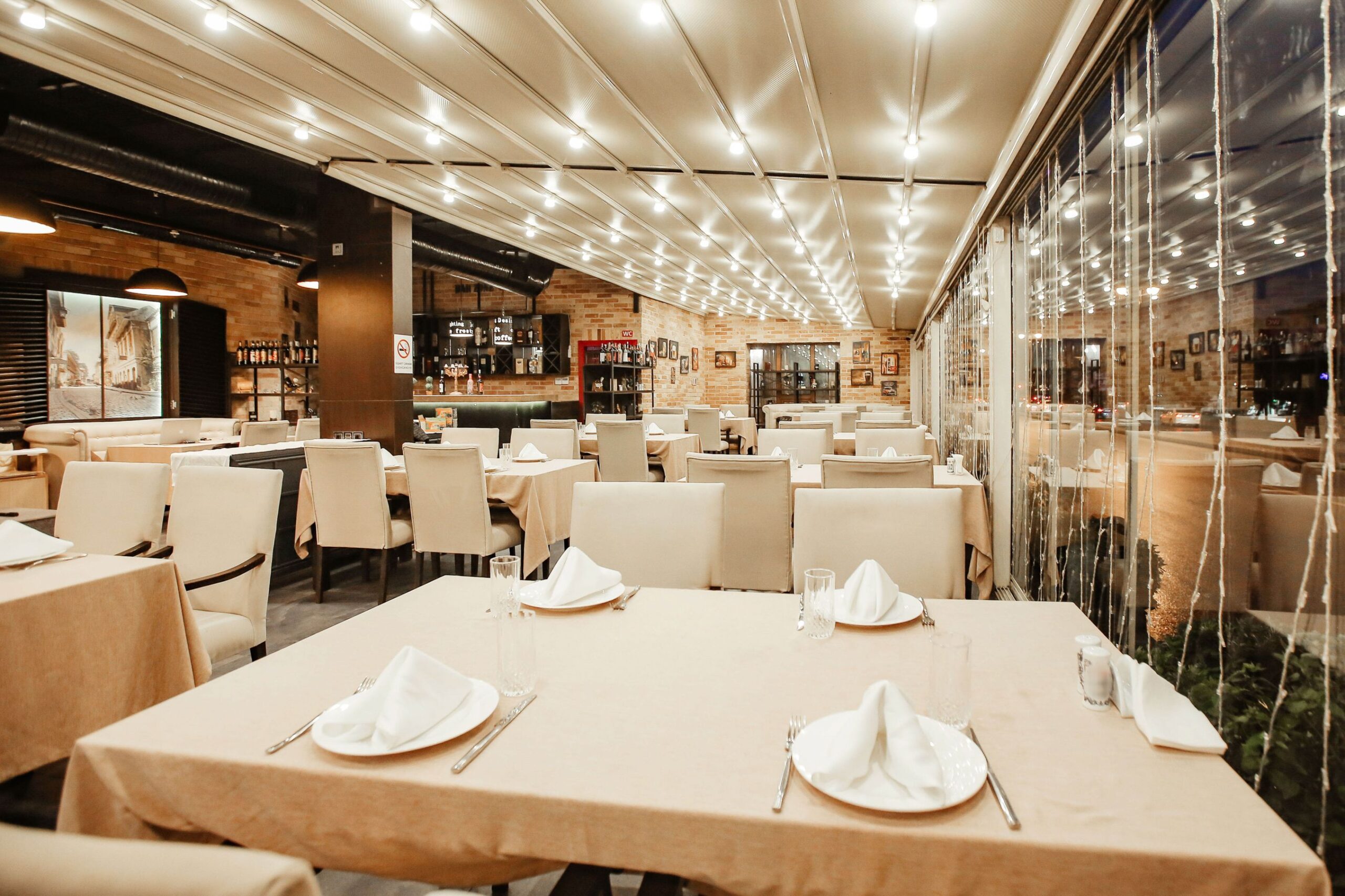Starting a new restaurant is exciting, but it also comes with challenges. The food industry is highly competitive, making it difficult for new restaurants to stand out. Attracting customers and building a strong brand are key to success, but both require effective promotion. Without the right marketing strategies, even the best restaurants can struggle to gain attention. This blog will offer practical and actionable tips to help you promote your new restaurant, attract customers, and establish a strong presence in the market. These strategies are designed to be simple yet effective, ensuring you can start making an impact from day one.
Tip 1: Develop a Strong Brand Identity
A strong brand identity helps your restaurant stand out in a crowded market. Your logo is the face of your brand, so make it memorable. For example, if you own a seafood restaurant, a logo featuring a stylised fish or nautical elements can convey your theme effectively. Your design should be consistent across all platforms, including your website, social media, and physical signage. This consistency builds a professional image and makes your brand easily recognisable.
A compelling brand story connects with your customers on an emotional level, making your restaurant memorable and relatable. When crafting your brand story, focus on what makes your journey unique—whether it’s a passion for local ingredients, a family tradition, or a dream realized.
Develop a unique selling proposition (USP) that sets you apart from competitors. For instance, if your restaurant specialises in vegan cuisine, highlight this aspect in your branding. Consistent branding fosters trust and helps customers remember your restaurant, which can lead to repeat business.
Tip 2: Leverage Social Media
Social media is a powerful tool for promoting your restaurant and connecting with potential customers. Choose platforms that match your target audience. Instagram, with its focus on visuals, is excellent for showcasing beautiful dishes and behind-the-scenes content. Facebook is useful for community engagement, event promotion, and sharing updates.
Create engaging content to attract attention. Post high-quality photos of your food, share videos of special events, and highlight customer testimonials. For example, if you have a special weekend brunch menu, post enticing photos of the dishes and include a call-to-action encouraging followers to make reservations. Use Instagram Stories or Facebook Live to offer a sneak peek of new menu items or special promotions.
Tip 3: Create a User-Friendly Website
Your website should serve as an effective online representation of your restaurant. Ensure it is mobile-responsive so it looks good on both desktops and smartphones. A user-friendly website should be easy to navigate with a clear menu, reservation system, and contact information. For instance, a clear and straightforward menu layout helps customers quickly find what they’re looking for.
Include essential features such as online reservations, which make it easy for customers to book a table. Display your menu prominently with detailed descriptions and high-quality images. Make sure your contact details are easy to find so customers can easily reach you for inquiries or bookings.
Tip 4: Offer Promotions and Discounts
Promotions and discounts can attract first-time customers and encourage repeat visits. Offer limited-time deals or discounts to entice people to try your restaurant. For example, you might offer a 20% discount on the first meal or a special deal for new customers.
Promote these offers through various channels, including social media, email newsletters, and in-store signage. For instance, use eye-catching graphics on social media to advertise a “Buy One, Get One Free” offer. In your email newsletters, highlight current promotions to keep your loyal customers informed and engaged.
Tip 5: Partner with Right Businesses
Building relationships with local businesses can enhance your restaurant’s visibility and credibility. Collaborate with nearby businesses to cross-promote each other. For example, if you’re opening a bakery, partner with a local coffee shop to offer joint promotions.
Partnership with a reliable supplier is also important that you have consistent access to high-quality ingredients, which is vital for maintaining the standard of your dishes. This consistency builds trust with your customers and enhances your restaurant’s reputation. Moreover, a good supplier relationship can lead to exclusive deals and specialty items that set your menu apart, making your promotions more attractive and effective.
You could also organise joint events, such as a local food festival or a community fair, where you showcase your products alongside other businesses. These collaborations can introduce your restaurant to new customers and strengthen your ties within the community.
Tip 6: Encourage Online Reviews
Online reviews play a significant role in attracting new customers. Positive reviews can build your restaurant’s reputation and credibility. Encourage satisfied diners to leave reviews on website or other online channels. For example, after a meal, you could send a follow-up email thanking customers and kindly ask them to share their experience online.
Respond to reviews, both positive and negative, to show that you value feedback. Thanking customers for positive reviews and addressing concerns in negative reviews demonstrates excellent customer service and helps build trust with potential diners.
Tip 7: Use Email Marketing
Email marketing allows you to maintain contact with your customers and keep them informed about your restaurant. Build a mailing list by encouraging customers to sign up for updates, special offers, and event announcements.
Send regular newsletters with relevant content, such as upcoming events, new menu items, or special promotions. For example, if you’re launching a new seasonal menu, send an email with details and an enticing description of the new dishes. Personalise your emails to make them more engaging and relevant to your audience.
Tip 8: Host Events and Specials
Hosting events can generate excitement and attract customers to your restaurant. Plan unique events such as live music nights, or themed dinners. For instance, you might host a “Taco Tuesday” with live entertainment to draw in crowds.
Promote these events through social media, local flyers, and partnerships with local businesses. Use event promotion to create buzz and attract attention. Successful events not only draw customers in but also provide opportunities for positive media coverage and word-of-mouth promotion.
Tip 9: Optimize for Local SEO
Local SEO helps ensure your restaurant appears in search results when potential customers look for dining options in your area. Start by optimising your Google My Business profile with accurate information, including your address, phone number, and opening hours.
Use location-based keywords throughout your website and blog content to improve your search ranking. For example, include phrases like “best Italian restaurant in [Your City]” in your content. Encourage satisfied customers to leave reviews on Google, which can further boost your local search visibility.
Tip 10: Engage with the Community
Engaging with the community helps build a positive reputation and attract loyal customers. Get involved in local events, sponsor community activities, or support local charities. For instance, you might sponsor a local sports team or participate in a charity fundraiser.
Community involvement helps create goodwill and demonstrates that your restaurant cares about the local area. This engagement can lead to increased visibility and positive word-of-mouth, as well as fostering strong relationships with customers who appreciate your support.
Read More: 7 Simple Ways Restaurants Can Improve Their Drive-Thru Experiences
Conclusion:
Promoting a new restaurant effectively involves a multi-faceted approach. Start by establishing a strong brand identity with a memorable logo and consistent design to build trust and recognition. Utilise social media platforms like Instagram and Facebook to engage with your audience, share appealing content, and attract customers.
Additionally, email marketing keeps your customers informed and engaged with updates, special offers, and events. Engaging with the community through local events and charitable activities builds goodwill and strengthens your restaurant’s reputation. By implementing these strategies and continuously refining your approach as your business grows, you can maintain a competitive edge and achieve long-term success.






